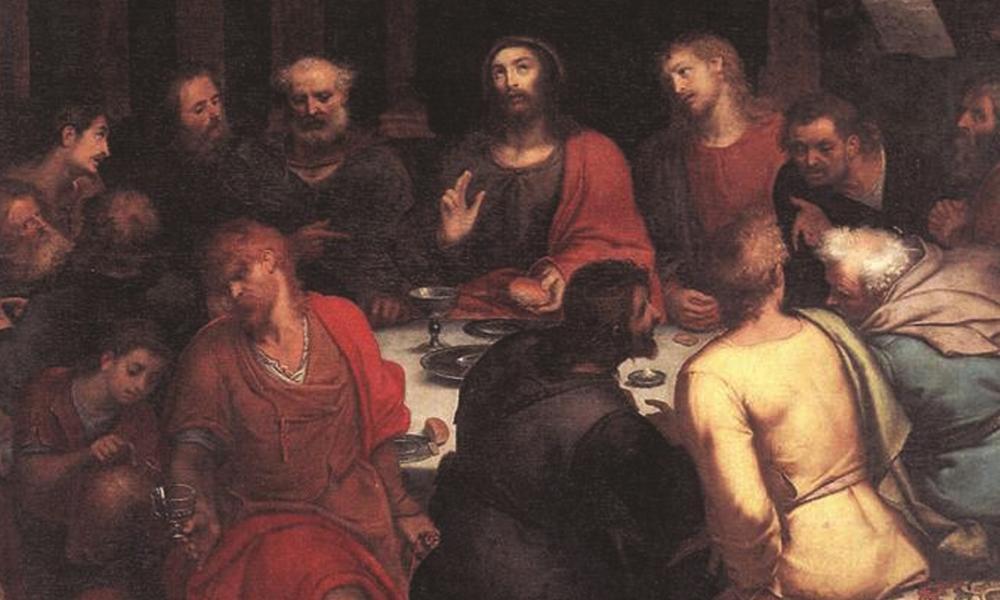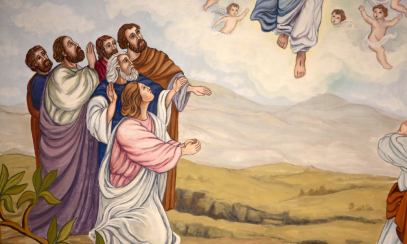
Exactly How is Jesus in the Eucharist? How is He Present?
Who is Christ? a year-long conversation with theologians.
FAITH is exploring Christology – the study of Jesus Christ. We asked several eminent seminary professors some questions about Jesus. Their answers are enlightening and thought-provoking.
Father Thomas Acklin is on the faculty of St. Vincent Abbey in Latrobe, PA. He is a graduate of Duqesne University, St. Vincent Seminary, The Catholic University of Louvain and Pittsburgh Psychoanalytic Institute.
Father Earl Muller is on the faculty at Sacred Heart Seminary in Detroit. He formerly taught at Marquette University in Wisconsin.
Father Gladstone Stevens is on the faculty of St. Mary Seminary in Baltimore.
FAITH: Tell us about Jesus as Eucharist. How is he present? How and why did he do it? How does it tie into our Jewish roots?
Father Muller: In the modern period, it’s difficult to talk about the mechanics of how the Eucharist is possible. We’ve made it more difficult, because the way we talk about substance has changed. To us, substance means “this collection of atoms.” Whereas, in the medieval period, when these definitions were being established, there were different definitions. It wasn’t an atomistic understanding – it really looked more at unity. When you have an atomistic understanding, you consider the unity of a thing as being secondary. So, for instance, when you look at a rock, you can keep breaking little pieces off it. The problem is that with human reality, there is a unity to this collection of atoms that the modern way of talking about substance really can’t get at. We need to recapture some of that though in order to understand the reality of the Eucharist – otherwise we look at this collection of atoms and ask where Christ is. The Gospels make it clear that Jesus delighted in touching people. The physicality of the Eucharist allows him to continue to touch his people throughout time and space.
Father Stevens: There is a food theme in the Scriptures. So many of Jesus’ controversies involve eating. This theme reaches its height in the Eucharist. It is unhelpful to debate whether it is a sacrifice or a meal. If we understand sacrifice as bringing about fellowship, then it doesn’t mean there is a difference. We have a constant need to be in fellowship with God. Jesus promised to be with us “until the end of the age” and this is one of the ways he accomplishes that. And why bread and wine? It continues the mystery of the incarnation – it is the glory of God in humble form. Thomas Aquinas says that this is another way in which God accommodates himself to our human condition. He doesn’t simply give up food; he becomes food for us. There is an older word, viaticum, or food for the journey. It reminds us of the Passover journey – food for the nation of Israel as they are on a journey to the Promised Land. The Eucharist is our food for the journey.
Father Acklin: Eucharist is the new Passover, the new paschal lamb, the new covenant. These connections with the Passover law are important. There was an integral connection between Christianity and Judaism until Christians were expelled from the Temple and Paul’s apostolate to the Gentiles began to grow. A Jewish element that is important when we are talking about real presence is the word “remember.” We talk about the Last Supper as a memorial – and must recall that the Jewish understanding of a memorial is a remembrance that makes present. When Jesus says, “Do this in memory of me,” he is saying that “On the day you do this, that day I will be with you.” He continues to give himself to us in the Eucharist. When we pray, “Lord, remember your church ...,” we are saying, “Lord, be present to our church, to our brothers and sisters – Lord, be present to those who have died.”
What is the Eucharist? The sacrament whereby bread and wine become the body and blood of Christ. From the Greek word for grateful or thankful.
Theologian of the month – St. Therese of Lisieux (1873-1897)
-
This very young saint is one of the doctors of the church, a title granted to those who possess eminent learning, a high degree of sanctity, and have been proclaimed as such by the church.
-
Her elder sister, Pauline, entered the Carmelite convent when Therese was 9.
-
Shortly thereafter, while Therese was desperately ill with fever, she prayed to Mary, a statue of whom was in her room. She saw the statue smile and was instantly cured.
-
After being turned down herself at the Carmelite convent because of her age, Therese petitioned the bishop and the pope and was finally admitted.
-
She died at age 24, still a novice. Her Little Way, a journal of her small daily sacrifices and her trust in Jesus, was published by Pauline, and appealed to thousands of Catholics who were trying to do the same. Within 28 years, she had been canonized.
Heresy!
Adoptionism: Jesus was adopted, not begotten
Jesus was the son of God – but not until he was adopted as an adult. That’s adoptionism in a nutshell. Adherents to this heresy, in the second century, believed that Christ did not exist until he was born as a man. God tested him, and because Jesus passed the tests, God adopted him and gave him supernatural powers. Then, because he was so good and holy, God raised him from the dead and elevated him to divinity.
Adoptionism was a way to deal with who Jesus really was – God or man. Paul’s letter to the Colossians refutes this heresy with what we now call the doctrine of hypostatic union – Jesus is both God and man. (Col. 2:9)
This heresy was condemned by Pope Victor near the end of the second century, but reared its head again in the eighth century. In that version, adherents believed that Jesus was the son of God in his divinity, but was only adopted as the first-born of God in his humanity. This variation on the theme was condemned in 798 by Pope Leo III in a council in Rome.
What does that symbol mean?
Anchor
The anchor is one of the oldest symbols of Christianity. As a long-understood representation of safety, it epitomizes hope in salvation through Jesus. Anchors appear in epitaphs in the catacombs and are often styled with a crossbar representing the cross of Christ in a subtle message.



